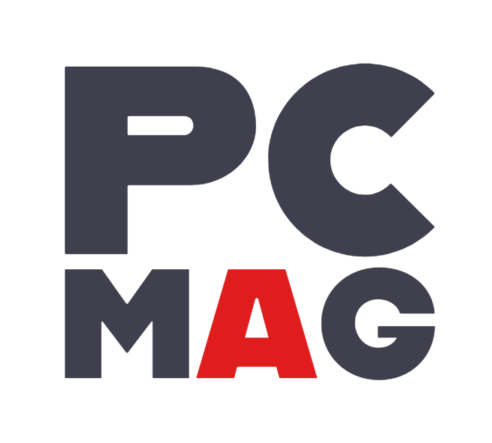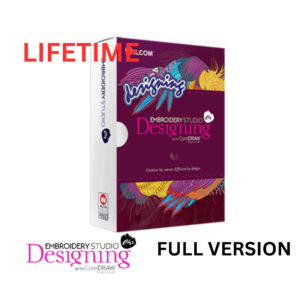Direct-to-Film (DTF) printing is revolutionizing the way designs are transferred onto various substrates, offering a versatile and high-quality printing solution. At the heart of this innovation is the DTF printer, a powerful tool that bridges the gap between digital design and physical products. This comprehensive guide explores the intricacies of DTF printers, from their technology and operation to tips for getting the most out of them.
1. Introduction to DTF Printing
1.1 What is Direct-to-Film (DTF) Printing?
Direct-to-Film (DTF) printing is a relatively new technology that involves printing designs onto a special film using a DTF printer. Once the design is printed, it is coated with a heat-activated adhesive powder. This film is then used to transfer the design onto various substrates, including textiles, ceramics, and metals, through a heat press. The result is a vibrant, durable, and high-quality print.
1.2 Advantages of DTF Printing
- Versatility: DTF printing can be used on a wide range of materials, from fabrics to hard surfaces.
- Color Accuracy: Produces bright, accurate colors that match the original design.
- Durability: Prints are resistant to fading, cracking, and peeling.
- Ease of Use: The process is straightforward, making it accessible for both small and large-scale operations.
2. Understanding DTF Printers
2.1 How DTF Printers Work
DTF printers operate by printing designs onto a special film using inkjet technology. The printed film is then coated with a powder adhesive that adheres to the ink. When heated, this powder melts and bonds the ink to the substrate, creating a vibrant and durable print.
2.2 Key Components of a DTF Printer
- Print Head: The print head dispenses ink onto the film in precise patterns. High-quality print heads ensure better resolution and color accuracy.
- Ink System: DTF printers use specially formulated inks designed for adhesion to the film and substrates. Common inks include CMYK and specialty colors.
- Film Roll: The film roll is where the design is initially printed. It needs to be compatible with the printer’s specifications for optimal results.
- Powder Adhesive Unit: After printing, the film is coated with adhesive powder, which helps transfer the design to the substrate.
- Heat Press: The heat press is used to apply heat and pressure to the film, melting the adhesive and transferring the design onto the substrate.
2.3 Types of DTF Printers
- Desktop DTF Printers: Ideal for small-scale operations or home businesses, these printers offer a compact design and are suitable for printing small to medium-sized designs.
- Large-Format DTF Printers: Designed for commercial use, these printers can handle larger rolls of film and are suitable for high-volume production.
- Hybrid Printers: Some printers offer both DTF and direct-to-garment (DTG) capabilities, providing greater flexibility for different printing needs.
3. Setting Up Your DTF Printer
3.1 Installation
- Unboxing and Assembly: Carefully unbox the printer and follow the manufacturer’s assembly instructions. Ensure all components are properly installed and secured.
- Software Installation: Install the necessary drivers and software provided by the manufacturer. This software is crucial for configuring print settings and managing print jobs.
- Connecting to a Computer: Connect the printer to your computer using the provided cables or wireless connection options. Ensure the printer is recognized by the operating system.
3.2 Calibration
- Print Head Alignment: Perform print head alignment to ensure accurate and consistent printing. Follow the manufacturer’s instructions for the calibration process.
- Ink Calibration: Calibrate the ink system to ensure proper color mixing and output. This may involve adjusting ink density and color profiles.
- Film and Adhesive Calibration: Test different film types and adhesive powders to determine the best combination for your printing needs.
4. Operating Your DTF Printer
4.1 Preparing Your Design
- Design Creation: Use graphic design software to create your design. Ensure that the design is in a high-resolution format and is sized appropriately for your substrate.
- File Format: Save the design in a format compatible with the DTF printer software, such as PNG, TIFF, or PSD.
4.2 Printing Process
- Loading the Film: Load the film roll into the printer, ensuring it is aligned properly and fed through the printer mechanism.
- Setting Print Parameters: Configure print settings such as resolution, color profiles, and ink density using the printer’s software.
- Printing: Start the print job and monitor the process to ensure there are no issues with the film or ink.
4.3 Post-Printing Process
- Powder Adhesive Application: After printing, apply the adhesive powder evenly over the film. Use a powder applicator or machine to ensure consistent coverage.
- Curing: Cure the adhesive powder using a heat press. The temperature and time will vary based on the adhesive and substrate. Follow the manufacturer’s recommendations.
- Transfer: Place the film on the substrate and use the heat press to transfer the design. Apply appropriate pressure and temperature to ensure proper adhesion.
5. Troubleshooting Common Issues
5.1 Print Quality Problems
- Banding or Stripes: Check the print head alignment and clean the print heads if necessary. Ensure that the ink system is functioning correctly.
- Color Inconsistencies: Verify color profiles and calibration settings. Ensure that the ink is properly mixed and that the film is compatible with the ink.
5.2 Adhesive Issues
- Poor Adhesion: Adjust the temperature and pressure settings on the heat press. Ensure that the adhesive powder is evenly applied and fully cured.
- Bleeding or Smudging: Check the ink density settings and ensure that the film is properly aligned during the transfer process.
5.3 Film Handling Problems
- Film Wrinkles: Ensure that the film is loaded correctly and is not kinked or creased. Use proper film handling techniques to avoid wrinkles.
- Film Jams: Check for any obstructions in the printer and ensure that the film is fed correctly through the printer mechanism.
6. Best Practices for Using DTF Printers
6.1 Maintenance and Care
- Regular Cleaning: Clean the print heads and ink system regularly to prevent clogs and ensure optimal performance.
- Film Storage: Store film rolls in a cool, dry place to prevent damage and ensure consistent printing quality.
- Powder Adhesive Handling: Store adhesive powder in a dry, airtight container to prevent clumping and ensure proper application.
6.2 Optimization Tips
- Test Prints: Conduct test prints to fine-tune settings and ensure that the final output meets your quality standards.
- Calibration: Regularly calibrate the printer to maintain color accuracy and print quality.
- Software Updates: Keep the printer’s software up-to-date to take advantage of new features and improvements.
7. Applications of DTF Printing
7.1 Textile Printing
DTF printers are widely used for printing custom designs on textiles such as t-shirts, hoodies, and tote bags. The versatility of DTF printing allows for high-quality prints on various fabric types and colors.
7.2 Promotional Products
DTF printing is ideal for creating custom promotional products like mugs, phone cases, and banners. The technology enables vibrant, durable prints on a wide range of surfaces.
7.3 Personalized Gifts
DTF printers are perfect for producing personalized gifts such as custom mugs, t-shirts, and keychains. The ability to print intricate designs and text makes them popular for creating unique and memorable gifts.
8. Future Trends in DTF Printing
8.1 Technological Advancements
The DTF printing industry is expected to see advancements in printer technology, including improvements in print speed, resolution, and efficiency. Innovations in ink formulations and film types will also enhance the capabilities of DTF printers.
8.2 Market Expansion
As DTF printing technology becomes more accessible, its adoption is likely to increase across various industries. The technology’s versatility and cost-effectiveness will drive its growth in both small-scale and commercial applications.
8.3 Integration with Other Technologies
Future developments may include greater integration with digital design tools, automation systems, and advanced color management technologies. These advancements will further enhance the capabilities and efficiency of DTF printers.
9. Choosing the Right DTF Printer
9.1 Key Considerations
- Printer Size and Capacity: Choose a printer that suits your production needs, whether it’s a desktop model for small-scale operations or a large-format printer for high-volume production.
- Print Quality: Evaluate the printer’s resolution and color accuracy to ensure it meets your quality standards.
- Ease of Use: Consider user-friendly features and software that simplify the printing process and reduce the learning curve.
- Support and Maintenance: Look for a printer with reliable customer support and easy maintenance options to minimize downtime and ensure long-term performance.
9.2 Recommended DTF Printers
- Epson SureColor F2100
- Known for its high-resolution prints and reliability. Suitable for both small and large-scale operations.
- **Roland VersaUV LE
F-200**
- Offers versatility for printing on various substrates, including textiles and hard surfaces.
- Mimaki TS55-1800
- Provides excellent color accuracy and print quality, ideal for high-volume production.
- Omniprint FreeJet 330TX Plus
- Features advanced color management and print settings, suitable for complex designs and detailed prints.
- Ricoh Ri 1000
- Compact and user-friendly, making it ideal for small businesses and personalized products.
10. Conclusion
DTF printers represent a significant advancement in the world of digital printing, offering a versatile and high-quality solution for transferring designs onto various substrates. Understanding how DTF printers work, their key components, and best practices for operation and maintenance will help you maximize their potential and achieve exceptional results.
Whether you are involved in textile printing, promotional products, or personalized gifts, investing in a DTF printer can enhance your ability to produce vibrant, durable, and accurate prints. By staying informed about the latest trends and advancements in DTF printing technology, you can continue to innovate and succeed in the dynamic world of digital printing.
This guide provides a comprehensive overview of DTF printers, from their technology and operation to practical tips for getting the most out of them. By applying the knowledge and best practices outlined here, you can leverage the full potential of DTF printing and achieve outstanding results in your printing endeavors.



